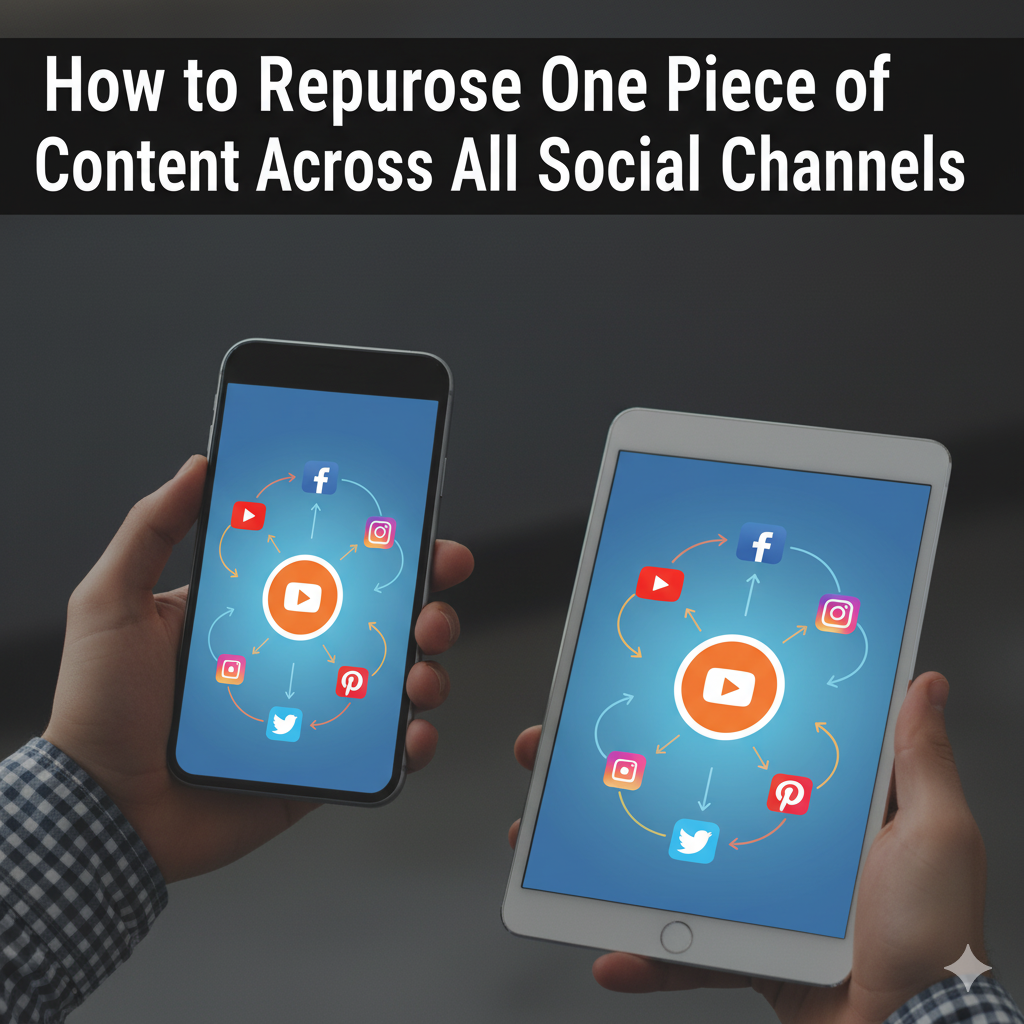
How to Repurpose One Piece of Content Across All Social Channels
Let’s be real, creating good content is work. Like, the kind that eats your weekends and caffeine supply. You finally finish a blog or video, hit publish, and then what? You move on to the next piece… and the next… and before long, you’re on this endless treadmill of “create, post, repeat.” Exhausting, right?
Here’s the thing: you don’t always need to reinvent the wheel. Sometimes, you just need to spin it differently. That’s where repurposing comes in. It's basically giving your content a second (or third) life by tweaking it to fit different platforms. One blog can turn into a dozen little posts, videos, or carousels, and suddenly, you’ve got content everywhere without starting from zero.
So, Why Bother Repurposing Content?
Besides saving your sanity? A few reasons:
- You save time. Instead of cranking out new stuff every week, you stretch one solid idea across multiple formats.
- You reach different crowds. What clicks on Instagram might flop on LinkedIn. Repurposing lets you adjust your message for each platform’s vibe.
- It helps your SEO. Different versions of your content can bring in more backlinks, more engagement, and more eyeballs from search engines.
- You reinforce your brand. When people see your message pop up consistently in different ways — it sticks. Repetition builds trust (and recognition).
Step 1: Start with a “Pillar” Piece
You need one meaty piece of content — something that can branch off into smaller bits. Think:
- A detailed blog post
- An ebook or guide
- A webinar or podcast episode
- A long-form video
Basically, something that covers a topic deeply enough that you can slice it into smaller, more digestible parts. Evergreen stuff works best — on topics that won’t be irrelevant next week.
Step 2: Look for Repurposing Gold
Now, go through your content and ask, “How else could I use this?” Here are a few quick conversions that always work:
- Blog post → LinkedIn post or mini-article
- Blog post → X (Twitter) thread
- YouTube video → Instagram Reels or TikTok clips
- Podcast → Quote graphics or blog summary
- Ebook → Infographics or carousel slides
The point isn’t to copy-paste — it's to adapt the idea so it fits each platform’s personality.
Step 3: Adjust for Each Platform’s Mood
Every social media platform has its own “language.” You wouldn’t text your boss the same way you text your best friend, right? Same logic.
- LinkedIn: Go for professional insights, stats, and thought leadership. Carousels do great here.
- Twitter / X: Break big ideas into snappy threads. Drop tips, quotes, or quick lessons. Hashtags help.
- Instagram: Make it visual — carousels, short Reels, or quote graphics. Keep it pretty and snackable.
- TikTok / YouTube Shorts: Short, punchy videos. Use captions, animations, or trending sounds to boost reach.
- Facebook: Share snippets, images, or quick videos. Add a question or poll to get people talking.
Basically — same message, different outfit.
Step 4: Optimize Before You Hit Post
Every channel has its own little quirks. You’ve got to respect the algorithm gods.
- Video length: TikTok/Reels 15–60 seconds; YouTube Shorts under a minute; LinkedIn videos around 1–2 minutes.
- Image sizes: Instagram loves 1080x1080, LinkedIn prefers 1200x627.
- Captions: Keep them tight on X, go longer on LinkedIn or Facebook.
And always, always include a call-to-action — something simple like “Read the full post,” “Download the guide,” or “Watch the full video.”
Step 5: Space It Out Like a Pro
Don’t flood your feeds all at once. Use scheduling tools like Buffer, Later, or Hootsuite to time things out. Post when your audience is actually online, and don’t repeat the same thing everywhere on the same day. Let the content breathe — spread it over weeks. That’s how you make one blog feel like a month’s worth of content.
Step 6: Watch, Learn, Tweak
Once your repurposed content is out there, keep an eye on how it performs. Check metrics like:
- Engagement (likes, comments, shares)
- Click-through rates
- Video views or watch time
- Leads or sign-ups
Notice what works, dump what doesn’t, and tweak your next batch accordingly. The goal is to find the formats your audience actually enjoys.
Conclusion
Repurposing isn’t lazy — it's smart. It’s about squeezing every drop of value from what you’ve already created. Start with one great piece, break it down, remix it across platforms, and schedule it smartly.
Before long, you’ll look like you’re everywhere — posting constantly — when really, you just learned how to recycle content like a pro.
Work smarter, not harder. Your coffee budget will thank you.
FAQs About Content Repurposing
1. Can I repurpose content across all channels without it feeling repetitive?
Yes. Adjust the format, tone, and visuals for each platform while keeping the core message intact.
2. How often should I repurpose content?
You can repurpose content multiple times over months or years, but vary the format and presentation to keep it fresh.
3. Can I repurpose content for SEO purposes?
Absolutely. Republishing content in different formats (videos, infographics, slides) can generate backlinks and improve search engine visibility.
4. What types of content are easiest to repurpose?
Evergreen content like how-to guides, industry insights, webinars, and comprehensive blog posts are highly adaptable.
5. Is it okay to repost the exact same content on different platforms?
It’s better to tailor content for each platform’s audience and format. Exact reposting may reduce engagement and appear repetitive.